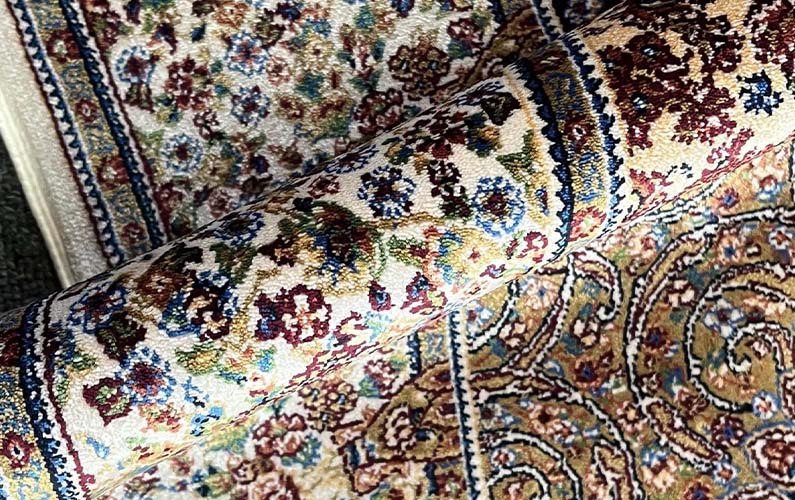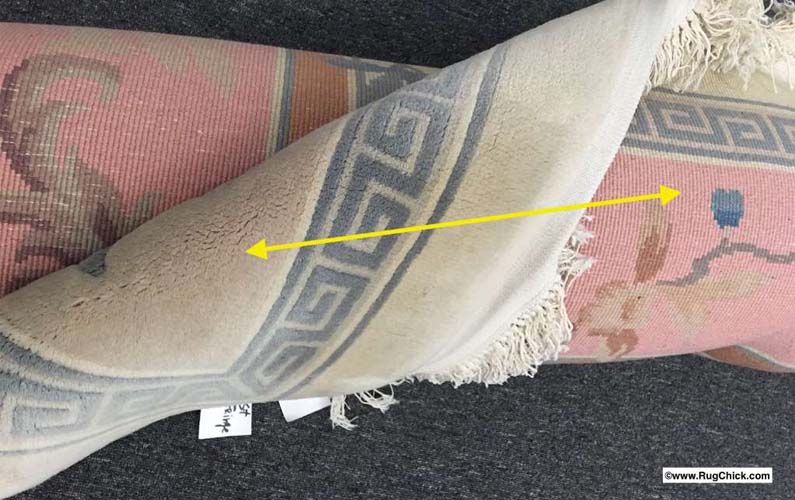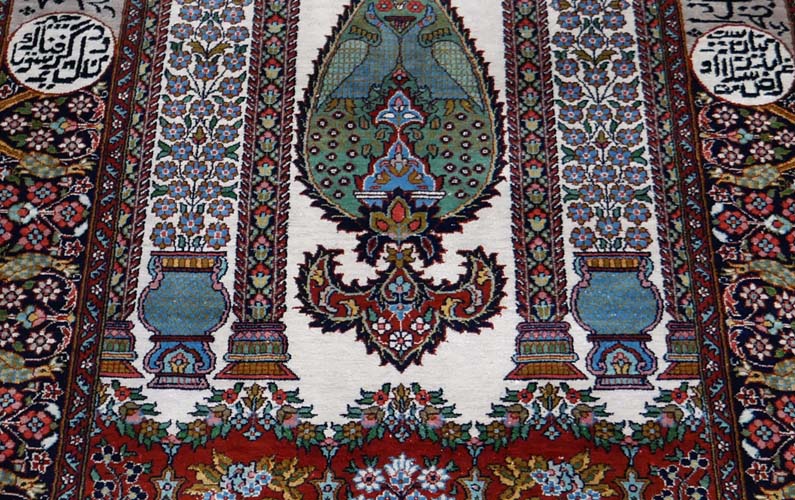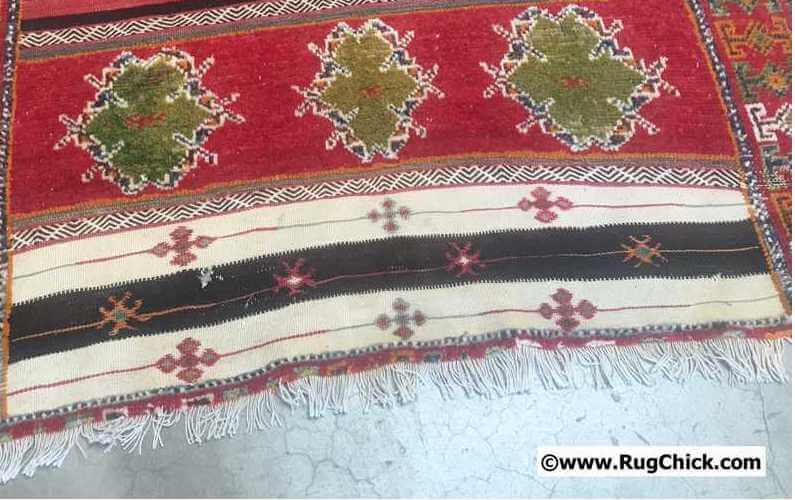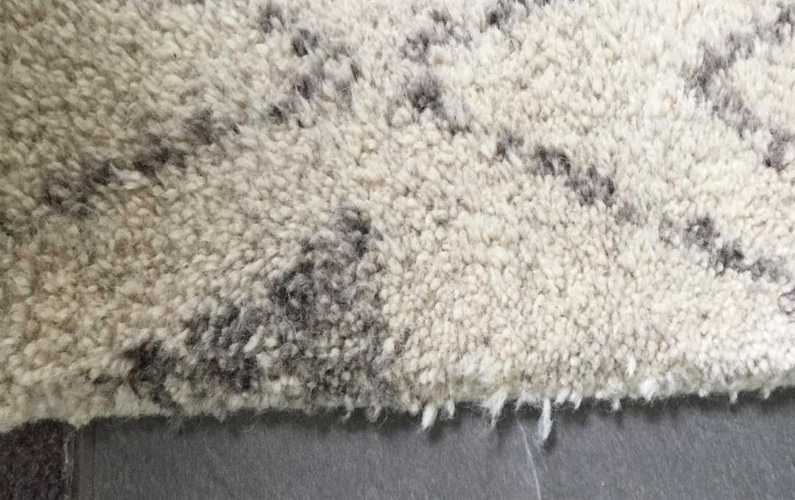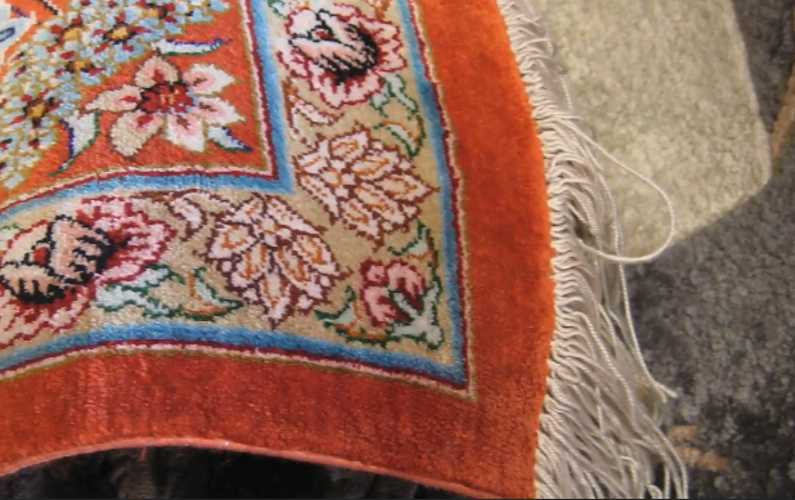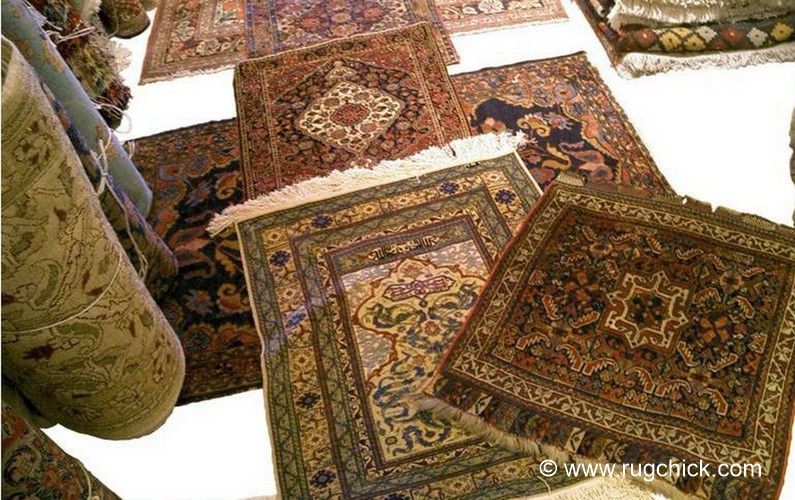How A Hooked Rug Can Hang You.
There is a horrible tendency by some contemporary American Hooked and Chinese Hooked rug manufacturers that is angering not only new rug owners, but also rug cleaners who try to serve these owners.
The rug looks innocent enough. Attractive, nice colors and floral design. Here is a hooked rug from China, typical looped construction on a mesh foundation, with a light latex and material backing.
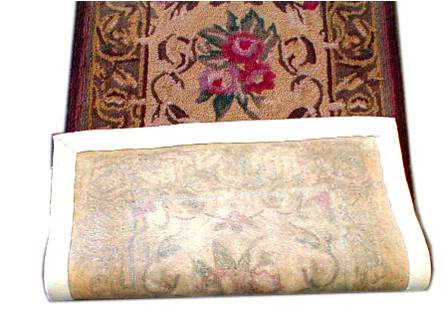
Decent quality hooked rug – but EVERY one needs to be inspected.
The horrible tendency I am referring to is to stencil a rug’s design in heavy ink before beginning their hooking process. And the nightmare waiting to happen is when water touches this rug.
You see, though good rug dyes can be stabilized during the wash process in order to give the rug a good thorough cleaning, INK cannot be stabilized. And as some rug manufacturers become lazy in their quality control, they are using these inferior methods unaware of the problems they are creating in the goal of cutting corners.
Here is an American Hooked rug, just a few years old. It’s white and brown, with the brown testing as “colorfast” so a rug cleaner would then move ahead to properly wash it. But if you grin open the loops and look closely, you can see a problem waiting to be unleashed.
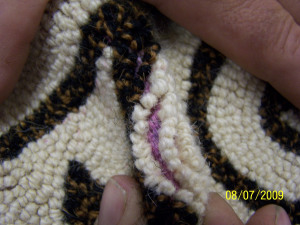
Dig deep into this rug to see the manufacturing flaw.
That is PINK ink that has been used to stencil the design elements of this hooked rug. Sometimes blue is used, or yellow. The problem is this is not permanent ink or dye, it is unfortunately water soluable.
The question then arises – if it is not permanent, how can you clean it?
The answer is – you can’t. Take a look at what happened to this rug, properly washed, but with the rug owner and the rug cleaner unaware of the rug’s fatal flaw.
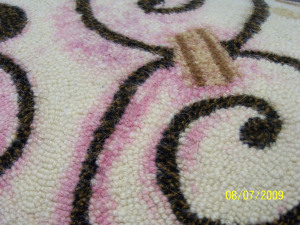
Rug maker cutting corners = disposable rugs
If you’ve ever gotten ink on fabric, you know that is can be next to impossible to remove it, especially a lot of it. So you can look at this photo and see that this rug is heading to the landfill.
What could the rug cleaner who handled this rug have done differently? He dye tested, but the problem was UNDERNEATH the wool loops he tested. The only way he could have discovered the disaster looming in front of him would have been to pull open the loops enough to see the mesh it was hooked on.
By seeing the ink that lay right below those loops, his option would have been to turn the rug away as uncleanable, or to offer a surface cleaning to try to remove some of the soil from the surface of this rug without allowing any moisture at all to the foundation mesh with the large amount of ink in it.
If you’ve ever tried to wash your hair with no-rinse shampoo, then you have an inkling of what the results of cleaning a rug without a good wash process is. There is a high level of residue, and the agitation on a Hooked rug of scrubbing without water as a buffer can lead to fuzzing, pilling, and shedding.
The recommended process for cleaning rugs is a wet wash. Rugs have been given a bath for as long as rugs have been woven. Yet, this fatal flaw in some contemporary Hooked rugs means they cannot be properly or thoroughly cleaned.
If you have a rug on the floor for years, with feet, shoes, and paws walking all over it – wouldn’t you want to clean it? Of course you would. But in these cases, cleaning it the right way will ruin it.
Rugs with this type of stenciling in heavy ink make them a RUG TO RUN FROM. Buyers should look closely at the foundation of these rugs before paying good money to purchase them. Cleaners must look closely at these rugs to make sure they do not lose a rug – and a client – by simply doing their job.
This problem also occurs with some Tufted (material on the back) rugs. Tufted rugs can be stiffer construction, and harder to determine if stenciling exists. If there have been some spills on the rug, and PINK or BLUE ink is visible on the front or back in that spot, then this is a warning sign.
This tufted rug was in a flood damage, and you can see the pink and yellow ink throughout that has bled into the material backing.
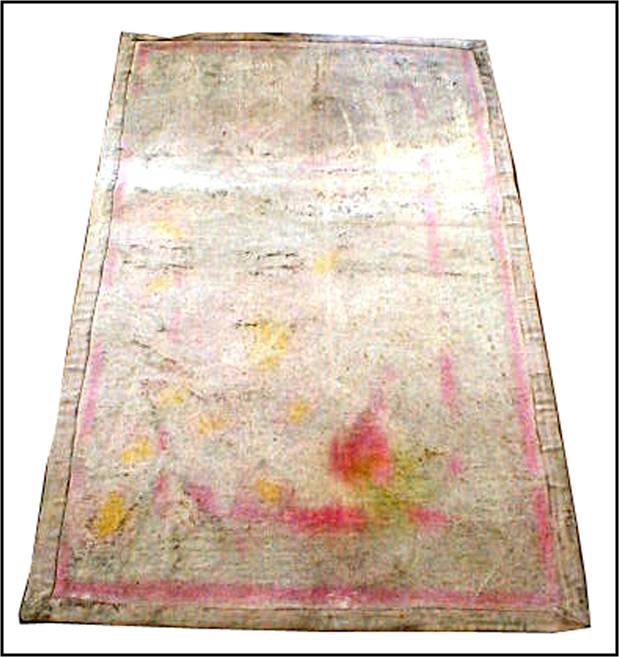
Ink on the back of a tufted rug involved in a flood.
Because you sometimes cannot know for certain if this stenciling exists on a Tufted rug, I suggest that you dry these rugs face down if you see any ink that becomes visible at all during the wash.
This will make the dry time longer, so use additional air movers (I love the Dri-Eaz Airpath for this faster drying). If the ink wicks, by being face fiber side down the ink will absorb into the material backing and away from the front of the rug. You cannot guarantee to keep all of the ink on the back, but you will have a higher likelihood of having this happen.
If you are a professional rug cleaner, what do you tell the owners of new American and Chinese Hooked rugs, or these Tufted rugs?
You can tell them that a certain percentage of these rugs have heavy stenciling in ink and that this is a manufacturing flaw. If you can identify the stenciling, and it appears to be heavy, then recommend to the rug owner to return the rug for one that does not have this flaw (or a milder version of it).
Let them know that if any ink appears during the cleaning, that you will quickly finish your wash process and will extract and dry the rug face down in order to direct the ink to the backside of the rug. Let your client know that there may be ink on the back when you are done, but you will do all you can to keep it from the front side.
If your client is too nervous to have the rug cleaned, then they have no choice but to keep the rug thoroughly vacuumed, and soon buy a new one to replace it. Not cleaning a rug after several years is not an option, because it is unsanitary to wait longer than two years to clean a rug under normal use. Fibers of rugs (and carpeting) act as filters for the home, and just as with air filters, when they are full then need to be cleaned or replaced.
It has been my experience that about 10% of the hooked and tufted rugs I’ve seen have had this flaw of heavy ink stenciling. Many of these you may plan for a worst case scenario and not have a problem at all with.
Better to prepare for the worst. And if you see the glaring warning signs, let the rug owner know immediately that they need to return the rug because it is one to run from.
– Lisa

